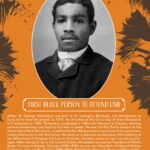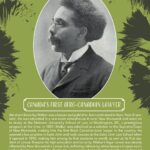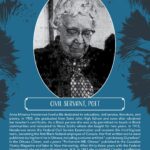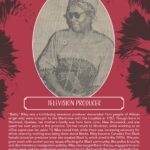Students walking across Downtown Fredericton this month will have noticed a new addition to the streets. Posters have been put up by the UNB Art Centre to celebrate Black History Month. The project, called “Rediscovering the Roots of Black New Brunswickers,” has been executed in a partnership between the Arts Centre, the university’s Bi-Campus Standing Committee on Equity, Diversity, Inclusion and Human Rights, and the City of Fredericton.
It is meant to recognize “the achievements and experiences of Black New Brunswickers and their significant contribution to shaping contemporary New Brunswick.” In total, according to the UNB Art Centre’s page, there are 44 posters.
Aside from being found around town, one can also encounter these panels in different buildings of the UNB campus. For example, they are on the walls of Tilley Hall, the Harriet Irving Library, and the Student Union Building. Each panel bears the portrait of a significant Black historical figure of New Brunswick, their name, and a brief biography that states their significance.
The Brunswickan spoke about the UNB Art Centre’s projects for Black History Month with Marie Maltais, director of the Centre. She said that there are two exhibitions: “One is ‘Rediscovering the Roots of Black New Brunswickers,’ which is a project we have been doing for about three years.”
“The other is ‘We Were Here: A Portrait of Daily Life in New Brunswick’s Black Community (1850-1960),’ which is a collection of photographs from one particular family that was settled here with the Loyalists.”
According to Maltais, the first project has been going on for three years. “[It] looks at different people in the Black community who have made strides in education or civil politics, and all kinds of things,” Maltais said.
The panels will be exhibited in the West Gallery at the UNB Art Centre for a month, between February 17 and March 17. There, one will be able to see their pictures and read their biographical sketches.
“Just to hear some of these names, you know, some of them we are familiar with, but with others, we are not,” she said.
When asked whether she had a particular interest in a single figure highlighted in the posters, Maltais brought up Betty Riley. “She was a television producer,” Maltais explained.
“In the 70s, she brought the first Black TV program in Canada to air,” she continued.
“She was an outspoken advocate, but she said that ‘women’s liberation is not my struggle.’ Black women never fought for the right to work, they had no choice. They had to work,” Maltais notes.
“So when I read that, when I look at the women represented in the exhibition, I greatly admire them.”
Among these women, she listed Anna Minerva Henderson, Mary McCarthy, Mary Winslow, Manisha Boober Gasman, and Georgina Wetzel.
Concerning the posters around the city, Maltais stated that they are not a new addition for this year. “During COVID, when people could not enter the galleries, I was thinking ‘how can we still bring this idea to the community, how do we keep this going?’”
“That was kind of when the idea occurred to me to put the banners downtown during Black History Month,” she explained, “so that has become something we have done annually since then.”





